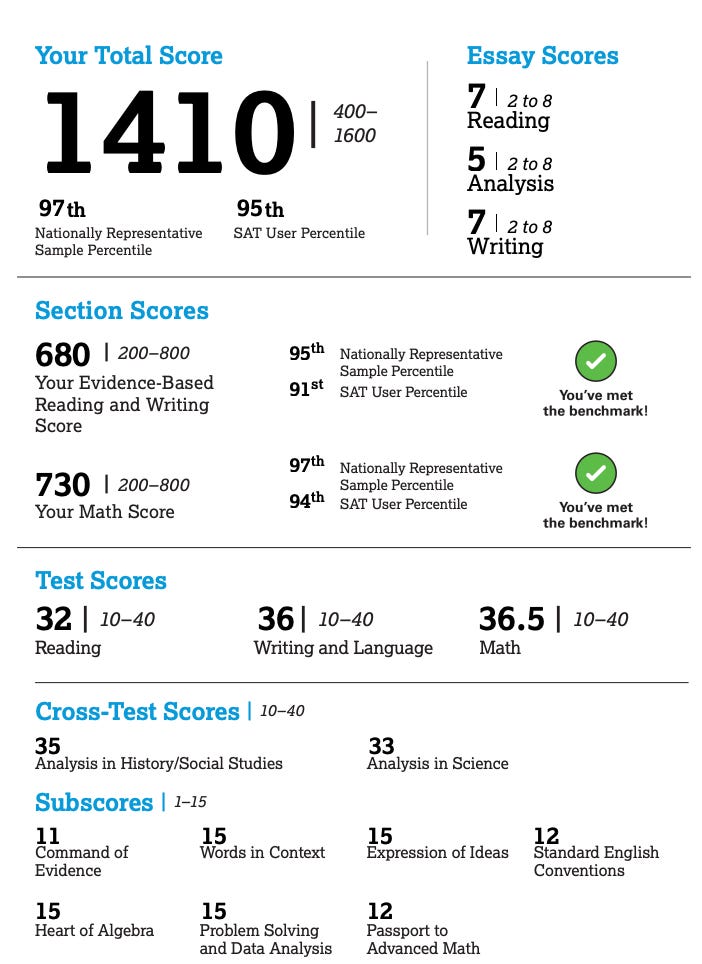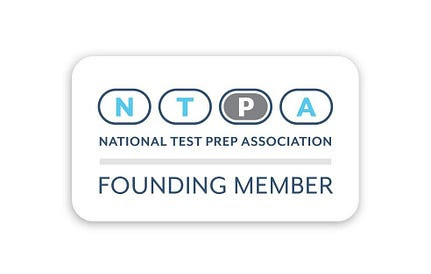Data Insights Revealed: SAT Score Trajectory Analysis on sample size of over 1000 Students reveals key conclusions
Bottom Line: It's not over, until it's over. Keep going!
Note to parents: Spots in 1:1 Coaching for SAT/ACT, High School Courses (Regular/AP), and College Admissions Strategy are filling up fast. Please give us a call today for a waitlist roadmap session on how academic coaching, SATs, and college consulting can help you. If you have any quick questions, feel free to TEXT our Program Officer Jasmine at 781-510-0738.
At the moment, we have a waitlist for private coaching and it will be first come first serve. Book your call today as our private coaching availability is very limited and in very high demand.
We believe this email will be very informative (and potentially inspiring) to you. Share with friends/family who have middle school or high school teens.
This email was written by Tigerway’s Founder Larry Cheung, CFA.
Dear Tigerway Team Members, Parents, and Prospective Families,
In this email, we wish to show you some data on student score analytics to help you understand the trajectory of both academic grades and also SAT Scores (and ACT Score equivalents).
Our hope is that this email will give you inspiration into your academic/SAT preparation process while also providing you data into how score growth trajectories work, based on our historical data at Tigerway.
In this note, we present to you 3 paths that students likely go through if they are to be successful in capturing the 1400 & 1500 milestones on the exam.
Obviously, there are more paths than the ones we are showing you today, but by far, these 3 are the most common.
The score report examples (with student names removed) are real demonstrations of student progress that has been made at Tigerway.
Path 1: The Journey from 1200s to 1400s
Commentary:
In our Program, we statistically see this journey the most often - the score growth from 1200s into 1400s on the SAT. We’ll show you some images below but first want to share our observations.
Observations:
This path, from 1200s to 1400s, is the most common type of victory in our program. There is a lot of statistical evidence that suggests that a person in the 1200 region, with hard work and coaching with us, can indeed get into the 1400 region.
The typical setup is a student who has a slightly stronger Math score than an English score. The skew, which we calculate as the Math/English ratio, is usually under 1.25. If the skew is over 1.25, we’ve found that score improvement will encounter friction and obstacles later on. This is because a high skew implies a large gap between math and english, and narrows the opportunity to score easy points on the math section (English takes longer to improve).
The timeframe that it takes to go from 1200s to 1400s based on our analysis is anywhere from 6-months to 12-months, with a median timeline of 9 months. For some students, it could take up to 18 months.
On balance, we believe that higher scores on the SAT will result in better grades back at school, improved study performance, and sharper ways of problem solving.
While SAT scores do NOT determine a person’s long term career future, it DOES assist in having the first year of University be an easier transition as the academic skills are directly applicable. And a strong first year in College can lead to better internship opportunities down the road.
Path 1 Score Analysis: A very typical 1400 setup is one where Math carries English.
The breakdown: In this case, we can see that much of the growth comes from mathematics, and is responsible for 76% of the growth (130 out of the 170 score jump came from math)
Path 2: A student with strong Fundamentals in the 1400 region, looking for a push into 1500
Commentary: For students who are already in the 1400 region, the right type of guidance can greatly accelerate the breakthrough into the 1500 zone.
Breaking 1500 on the exam typically implies that you need to get fewer than 8-9 questions from. The margin of error to earn a 1500 on the Test is narrow, and that means the following personality traits are required:
Excruciating attention to detail
Strong ability to think under pressure
High levels of patience (to recheck work)
Strong psychology to withstand hard problems that may stump you in the beginning
Path 2: In order to get a 1500, it’s best to have very balanced skills across math and English because a large skew in one area or another greatly disproportionately impacts the chances of securing this level.
The breakdown: Usually, a break from 1400s into 1500s will require either a sharp balance of both M/E to average 750+ each, or will require one area to be near perfection. We find that averaging 750+ on each section is a safer strategy than trying to depend on perfection for one section.
Path 3: The Journey that Inspires others. From 1100-1200 into the 1500+ Region.
Commentary:
Path 3 is the situation where the final outcome is immensely impressive, yet most people who are observers may not fully appreciate the deep level of care, committment, and hard work that went through arriving at this outcome.
This is the path where a student goes from the 1200 (or under) region into the 1500 region. It is also the hardest path.
This Path is the least common, but as demonstrated below and at Tigerway numerous times over the years, it DOES in fact exist.
This path almost always requires the student to be academically sound first, but then he/she has identified themselves as a “bad test taker”
At Tigerway, our specialty is to turn good students, who identify as bad test takers, into stunningly good test takers. The truth is, if you are a good student, it’s only a matter of time until the test reflects it.
Path 3 Breakdown: You will witness a Long Consolidation period before a breakout to the final goal. In other words, you may feel stuck in a certain range for many months without ever feeling the certainty that progress is being made. For this reason, Path 3 is the most difficult journey and statistically is the most rare. Students who go through Path 3 are likely to be able to accomplish many things they aspire to do in the future.
The journey from start to finish for Path 3 can take up to 2 years.
It is well worth it if you are aiming for Top 30 U.S. Colleges, where a life of prosperity awaits you after graduation.
Bottom Line: Breakthroughs can take a long time to happen. Being in the right coaching program and student community can help you sustain self-belief and stay on the right track.
Later on in your career, you are guaranteed to enter a stage of your life where you combat feelings of fear, uncertainty, and doubt.
The best way to develop the mental strength to endure the challenges that lay ahead are to train yourself in high school via getting amazing grades and taking on the challenge of scoring higher on Exams.
You may not know it, but the process of preparing for difficult exams IS secretly a preparation process for making you a stronger person.
If you enjoyed this note, share it with friends and family.
If you are currently on Path 1, Path 2, Path 3, or perhaps another Path, we hope to take you to your final deserved destination.
In all cases, the number one trait and quality that brought these students to success was Grit/Persistence.
Those who give up shall never know their true potential.
Tigerway is a proud Founding Member of the National Test Prep Association (NTPA) where the NTPA consistently communicates with the College Board’s SAT Exam Team and ACT Exam to understand the future of academics and standardized testing.
Connect with us Today - get your Grades, SAT/ACT Scores, and increase the likelihood of admission offers into the most selective U.S. Universities:
Text us directly on our website:
https://www.tigerwayprep.com/
Or book a call with our program officer Jasmine Ngo at 781-510-0738 to get priority status on the private coaching waitlist.













